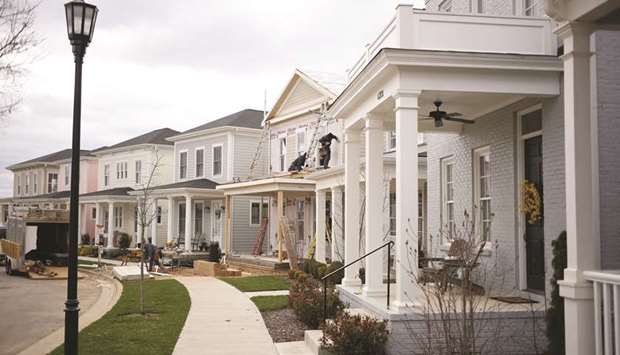Higher lumber prices as well as labour and land shortages have left builders unable to meet strong housing demand, which has depleted the number of properties available for sale.
Housing demand is being fuelled by the lowest unemployment rate in 18 years. “There is some early evidence that lumber prices may now have peaked, but the shortage of labour will not be solved so quickly, and that means housing market conditions will remain tight for the remainder of the year,” said Matthew Pointon, property economist at Capital Economics in New York.
The Trump administration in April 2017 imposed anti-subsidy duties on imports of Canadian softwood lumber.
Housing starts vaulted 5.0% to a seasonally adjusted annual rate of 1.350mn units last month, the Commerce Department said yesterday.
That was the highest level since July 2007.
Starts in the Midwest jumped 62.2% to their highest level since September 2006, offsetting declines in the Northeast, South and Midwest regions.
Building permits fell 4.6% to a rate of 1.301mn units, the lowest level since September 2017.
Economists polled by Reuters had forecast housing starts rising to a pace of 1.310mn units last month and permits declining to a rate of 1.350mn units.
Single-family homebuilding, which accounts for the largest share of the housing market, increased 3.9% to a rate of 936,000 units last month.
It has lost momentum since hitting a pace of 948,000 units last November, which was the strongest level in more than 10 years.
Permits to build single-family homes fell 2.2% in May to a pace of 844,000 units, an eight-month low.
With permits lagging starts, single-family homebuilding could slow in the months ahead.
US stocks fell sharply as President Donald Trump’s latest threat to impose duties on more Chinese goods fanned fears that tit-for-tat tariffs could spiral into a trade war.
The PHLX housing index declined in tandem with the weaker stock market.
Prices for US Treasuries rose and the dollar strengthened against a basket of currencies.
A survey on Monday showed confidence among single-family homebuilders dipped in June, with builders “increasingly concerned that tariffs placed on Canadian lumber and other imported products are hurting housing affordability.” According to the survey, more expensive lumber had “added nearly $9,000 to the price of a new single-family home since January 2017.”
Residential investment contracted in the first quarter.
The housing market continues to lag overall economic growth, which appears to be accelerating in the second quarter after hitting a speed bump at the start of the year.
Growth estimates for the second quarter are as high as a 4.7% annualised rate. The economy grew at a 2.2% pace in the January-March period.
In May, starts for the volatile multi-family housing segment rebounded 7.5% to a rate of 414,000 units.
Permits for the construction of multi-family homes fell 8.8% to a pace of 457,000 units.
The housing shortage could ease slightly, with more houses under construction and being completed.
Housing completions increased 1.9% to a rate of 1.291mn units, the highest level since January 2008.
The number of single-family houses completed last month was the most since March 2008. Realtors estimate that housing start and completion rates need to be in a range of 1.5mn to 1.6mn units per month to plug the inventory gap.
The stock of housing under construction edged up 0.2% to 1.127mn units, the highest level since July 2007.
Single-family homes under construction last month increased 0.2% to 515,000 units, the highest level since May 2008.
“While the rise is good news, it’s still not enough for a hot real estate market that is starving for inventory during the peak summer sales season,” said Sam Khater, chief economist at mortgage finance agency Freddie Mac.

